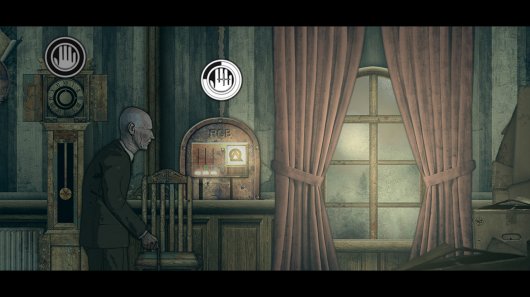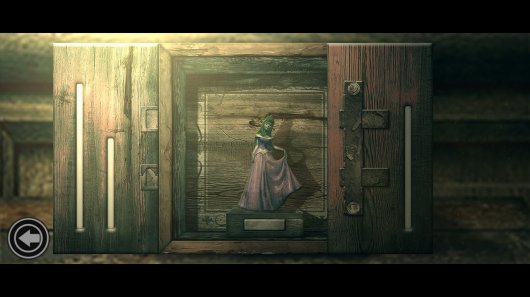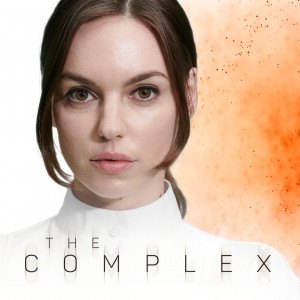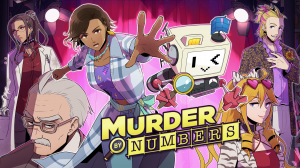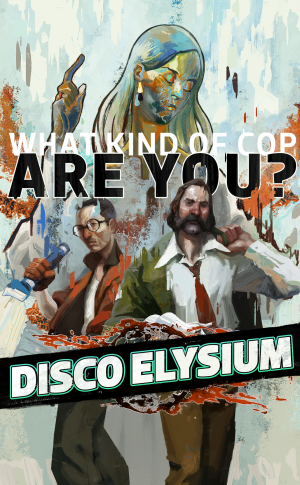Review for Heal

Growing old is a scary prospect. If you’ve ever had the misfortune of watching an elder relative or friend slowly lose their faculties as time marches on, then you will likely know what I mean. Perhaps the most alarming part of this is the loss of one’s memory. It starts with small things, such as a misremembrance, but in some cases it eventually advances to the point that the individual can no longer even conceive the real world around them. This struggle with old age and critical memory loss is the core premise of Jesse Makkonen’s Heal.
Heal is a side-scrolling adventure in which you control an elderly man as he moves through the world solving puzzles to progress toward an unknown objective, unlocking brief memory fragments along the way. Both the story and atmosphere have Lynchian undertones: nothing is explained to you, so you’re never quite sure what exactly is happening. While a little more clarity or at least insight into the protagonist’s journey would have been appreciated, this is nevertheless a great puzzle game accompanied by ominous sound design, thoughtful settings and some finicky controls.
Even at the beginning, players are given almost nothing to go on. You take control of the unidentified protagonist, who rises from his armchair with help from a cane in a gloomy, dilapidated home-like environment. It’s all very abstract, so you cannot be certain of anything: who exactly is the protagonist, and is this his house? Your first objective is simply to get through a door, which you can only do by solving puzzles. This sets the tone for the rest of the game, which presents a series of new corridor-like environments with their own doors to exit. The locations change along the way, but like the first one, they are always disconcertingly abstract. Clearly Heal is aiming to replicate an experience akin to dementia, and it does so very effectively.
The hand-painted artwork ranges from dark and moody with effective use of shadow, to bright and bold with pastel colours popping from the screen. The various settings, of which there are only a handful, take place both inside and out, ranging from houses to parks to log cabins, and at different times of day and year. And yet while such scenes might seem familiar overall, they’re not quite right. They represent the state of the old man’s memories, which are a jumble of puzzling elements, in this case quite literally.
The artwork is accompanied by an oppressive ambient soundtrack—no lyrics, just solid tension-building bass, juxtaposed against the shrill, sibilant sound effects such as birds chirping or scratching metal. Events occur at various times of day and even entirely different seasons, but they’re always somewhat spooky. You’re never actually in any danger, but the inability to understand gives you an uneasy feeling that never relents. You don’t quite know what’s going on, and that’s the point. Losing your memory as you grow older is a scary prospect, and this game successfully manages to represent that troubling uncertainty throughout.
The basic mechanics of Heal are very simple. You’re thrown straight into the action without introduction or tutorial, but the interface is sleek, with nothing getting between you and the gameplay. On PC you move along a 2D plane in third-person by clicking the mouse where you want to move. You’ll similarly click to interact with the puzzles dotted throughout the environment, which can be identified by symbols that appear when you get close to them. There are no other characters, apart from quick flashes of what are presumably memories from the protagonist’s life. It’s just you, the environment, and the puzzles.
The main focus of Heal is its puzzles, which always relate to everyday objects but with elements out of place, such as dials with symbols on what looks like an electricity box, for example. It’s a rather contrived manner of inserting puzzles, but here it works as it adds to the surreal, not-quite-sure-what’s-happening nature of the game. Puzzles switch to a first-person view in which you can hold, click and drag certain elements, a control system that is likely better suited to the mobile version’s touchscreens than a mouse. Move too fast when dragging something and the game stops detecting your movements, unable to keep up and resetting the puzzle. (This bugginess also rears its head when you need to go through doorways; if you’re too close, the prompt to use the door disappears.) Thankfully these issues, though annoying when they happen, are infrequent.
The overall structure is very straightforward, requiring you to solve the puzzles in one area to unlock the door to the next one. The puzzles themselves are non-linear, however. Sometimes you will have to bypass the nearest one and explore beyond it to get a clue, perhaps solving other puzzles first, then backtrack to where you were. The information you need can often be found embedded in the actual environment somewhere. If you’ve played The Witness, think along those lines, but more obvious. Need to connect buttons and make a shape? Have a look at the objects around you to see if anything looks familiar. Once you’ve solved everything in one location and progressed through the door, you can look through it from the other side to get clues that will help you solve the next cluster of puzzles in the new setting.
Heal has some very clever challenges. One has you opening a fireplace and turning symbols to reveal a number, but the clues are found elsewhere. Even after succeeding at that, you’ll need to figure out how to display the number clearly, and then determine how best to utilize it. Another will have you setting the strength of a ball’s trajectory on all axes to navigate it through a maze. Later in the game, you must move more symbols around to change the time of day, affecting which puzzles you can actually tackle.
There are a couple of puzzles that require good hand-eye coordination. One has you pressing a button to stop a circle that is moving and rotating at the same time, but it must be stopped precisely according to an exact copy of itself etched into the background. Otherwise the gameplay is never too frustrating. Sometimes puzzle games will have you pondering for hours until the fun turns to frustration, but that’s not the case with Heal. The challenge is enough to make you think but not require too much thought.
All of the puzzles are connected to memory in some way. Either you are forced to remember increasingly complex patterns or information to complete the challenges, or they relate to the old man’s recollections in some way—an object, image, or location. As you solve more puzzles, you get the sense that you are moving towards something, but that something is ever-intangible and unexplained. Although it’s largely open to interpretation, there is enough to start piecing things together from its abstract vibe, but saying any more would be a spoiler, and it really is something that needs to be experienced.
At around two hours maximum, Heal doesn’t overstay its welcome. We get some answers to what’s going on at the end, but the full story remains somewhat elusive. The puzzles are engaging, the plot goes to some interesting if decidedly abstract places, and the atmosphere is tangibly spooky. Don’t expect everything to be neatly wrapped up by the time the credits roll, but Heal is a great game with an important theme that I can recommend to anyone looking for a thoughtful, poignant, puzzle-based experience in a compressed package.






